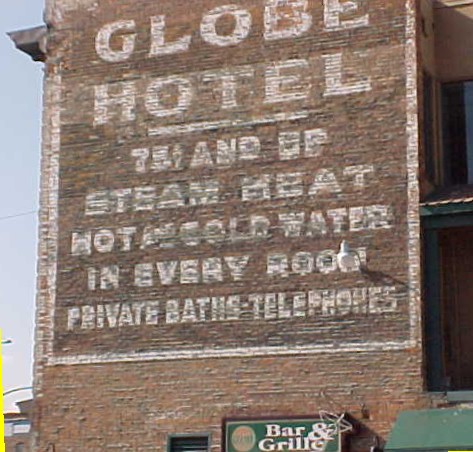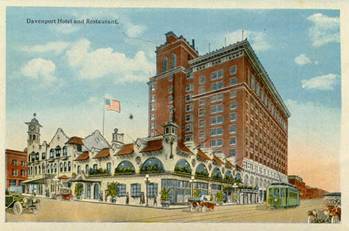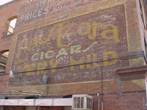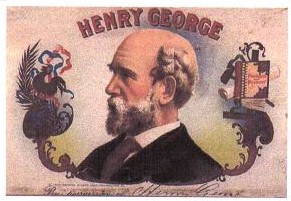Cancer changes everything—and not for the better, obviously. Once an online quiz determined that I was a 36% control freak; I would have thought that percentage to have been higher. I tend to micro-manage my life and my family’s lives. Most of all I want complete control of my body. Years ago, I decided that drinking alcoholic beverages was not for me because I hated being out of control mentally and physically. That is just one example of the control issue for me. Control becomes a moot point where cancer is concerned. Cancer, and its chemotherapy, have the one and only control over the cancer patient’s bodily functions. This lesson I learned on September 30, 2007 when I was diagnosed with non-Hodgkins large cell lymphoma cancer in all my abdominal lymph nodes and in my bone marrow.
MY DIAGNOSIS: I was having leg and hip pains. Doctors tried various treatments and determinations, such as let’s have physical therapy because it seems to be muscles or let’s get an X-ray of the hip because it may be that I needed a hip replacement. Four months later I was still in pain, but the pain was now excruciating and virtually all over my body. A quick-witted emergency room doctor determined with tests that I had lymphoma. I am so grateful that she did find an accurate diagnosis when she did, because I might be gone now if the cancer had continued undiagnosed. My bone marrow was so impacted with cancer that a marrow biopsy was almost impossible. It also was one of the most painful procedures I had ever had up to then in my life. If I ever need another bone marrow biopsy, I have determined that the doctors will have to render me completely unconscious to do the biopsy or it won’t be done. After the diagnosis was complete, I became a patient of Cancer Care Northwest. My oncologist who is a lymphoma specialist among other areas of expertise is Dr. Hakan Kaya. From the start, Dr. Kaya made it perfectly clear that my lymphoma was treatable, in fact curable, and that in six months I would be an entirely different (and better) person in relation to cancer. This was way beyond my grasp at the time, because I was so sick. I was anemic, neutropenic, and had white platelets at 11,000 (the normal range for platelets is 150,000 to 450,000). Eleven thousand is low; however, I would digress to 5,000 before I was on the road to recovery.
CHEMOTHERAPY: There are a large number of cancers and an equal number of treatments possible. There are at least 40 lymphoma cancers and different combinations of therapy for each, sometimes even multiple therapies, including radiation therapy. In my case R-CHOP [rituxin, cyclophosphamide, hydroxydaunomycin, oncovin® (vincristine), and prednisone] was the poison of choice by my oncologist. I say poison because in effect that is what chemotherapy is and does. It poisons the cancer and at the same time virtually destroys the patient’s immune system, along with causing disfunction of most other body systems in minor and/or major ways.. Each cancer victim is different; the examples I give are personal to me and may not be indicative of all lymphoma patients. Chemotherapy is every 3 weeks for me. The nadir (low point at 1.5 weeks) is always the hardest for me; then my body starts slowly rebuilding before the next chemotherapy.
CHEMOTHERAPY CYCLE #1: This begins in early October with admittance to the hospital, every conceivable test (chest X-ray, CT scan, PET scan, blood work–I had already had an MRI) given, and chemo round one instituted. It starts with Rituxin, from which I went into shock, chills, violent shaking, and fear of death. The chemo nurse did something appropriate, which stops the toxic reaction, and the R-CHOP chemotherapy resumed to conclusion. I was so sick and so out of it mentally and physically: I was barely drifting in and out of consciousness that I cannot accurately describe what the nurse did or did not do. I have learned since that a shot of Demerol is given to stem the toxic reaction, so I can only assume that was administered to me. Possibly also the flow rate of the Rituxin could have been decreased. The only real awareness I have of the first few days is one of extreme sickness, horrible nausea and vomiting, a sense of floating in and out of consciousness, a mental condition of praying one moment for wellness and the next moment for death. I vaguely remember my support squad by my side–my husband and close friends. At this point it all seems a blur. I actually went home for about three days, but ended up with low blood counts and fever, which returned me to the hospital for another three weeks’ stay. This stay included chemotherapy #2 on Halloween–appropriate I thought at the time.
CHEMOTHERAPIES #2-#6: I was terrified after chemo #1 that I would have the same toxicity, especailly to the Rituxin. However, this was not the case. I had a wonderful chemo nurse who explained so many things to me about lymphoma and chemo, who talked to me through the procedure, who was prepared for any toxic reactions (even though I had no toxic reactions after #1), and who generally held my husband and I together with a gentle, calm voice and demeanor. To her I am eternally grateful; she has definitely been my guardian angel through multiple stays at the hospital
SUPPORT: I am at a loss to tell clearly how grateful and appreciative I am of the support I have received from family, friends, and medical personnel. I believe with all my being that the support is what has truly pulled me through this whole traumatic ordeal. Without it, I am sure I would not have had the inner strength to survive. Here are a few examples of my support network. Enough cannot be said about the greatness of my husband. He is my rock of 42 years (our 42nd anniversary was in October, while I was in the hospital). He was with me much of everyday during hospital stays and took care of every single thing home related–cleaning, shopping, laundry, cooking, caring for me, driving me to all appointments, helping me in and out of the car and supporting me physically when I could barely walk, plus many more things I have likely forgotten. All these things he did with love and kindness, while trying to conceal his own tears and fears that I might not make it. I am equally blessed with family and friends. My two grown sons left their families for a week to hospital-babysit me. One or the other was with me almost continuously. It was the most comforting, calming, and wonderfully bonding experience I have probably ever experienced in my life. I have received equal love and caring, long distance by phone and mail from their wives (my wonderful daughters-in-law) and from their combined ten children, my grandchildren whom I dearly love, too. I have had local friends with my every week, whether I was home or in the hospital, bringing me care, conversation, love, and attention. I have even had a close group of three friends drive 300 miles to spend a few days with me. I am truly blessed.
LOW POINTS, HIGH POINTS, AND SIDE EFFECTS: Right before and after chemo treatments my blood levels are better, I am feeling stronger, and I tolerate food better. The mid-cycle (nadir), which is the lowest point for my blood counts and when my immune system is at its very lowest that I am virtually debilitated. I am weak, food won’t stay down or tastes terrible, and I usually have to go back to the hospital for blood infusions. The side effects related to food are likely the worst. Although this aspect is different for each person, foods have tasted yeasty and like rusty metal to me. The taste thing has gradually improved over time, but has not totally resolved itself. Also, maybe the hardest side effect to get a handle on is nausea and vomiting. Each patient has to work diligently with the doctor to find the right single or combination anti-nausea medications to get the nausea and/or vomiting under control. From chemo and cancer, along with the side effects, I have lost approximately 50 lbs., which is okay as I needed to lose the weight; however, this is definitely not the weight loss method I would have chosen or that I would recommend to anyone. Another side effect–not very harmful, but annoying–is hair loss. Someone said that not all chemo patients have hair loss; I personally think that most do. Mine came out in globs post Chemo #1. I have adjusted to the look of baldness and to wearing a head covering to prevent heat loss from my head. What gave the biggest laugh I have had during this whole ordeal was when I finally started feeling well enough to put on a bit of makeup and realized I only had 3 eyelashes to put mascara on.
REMISSION: Remission (a complete disappearance of the cancer) is the goal. My tentative goal date is February 18 when I have a PET/CT Scan to see if the cancer is gone. Even in remission, I will have at least two more chemotherapy cycles. All fingers are crossed for good news.
TERMS AND RESOURCES: Following are definitions of some key terms relevant to cancer and/or chemotherapy. Also following are resources you may want to check out.
- Anemia: a decrease in the number of red blood cells and, therefore, a decrease in the ability of the blood to carry oxygen. Anemia can cause a pale complexion, weakness, fatique, and shortness of breath.
- Biopsy: a procedure to obtain tissue for diagnosis.
- Bone Marrow: a spongy tissue in the central cavity of bones that plays a major role in the development of blood cells.
- Lymph Nodes: small structures the size of beans, containing large numbers of lymphocytes and connected to each other by small channels called lymphatics. These nodes are throughout the body.
- Neutropenia: A lower than normal number of blood neutrophils, a type of white blood cell.
- Platelets: Small cells (about one-tenth the volume of red blood cells) that stick to the site of blood vessel injury, aggregate with each other, and seal off the injured blood vessel to stop bleeding.
Resources:
- The Lymphomas. The Leukemia and Lymphoma Society. 2006.
- Holman P, Garret J, Jansen W. 100 Questions and Answers about Lymphoma. Jones and Bartlett Publishers. 2004.
- Cancer Care Northwest: Hakan Kaya, M.D. Medical Oncologist/Hematologist; Director Inland Northwest Autologous Stem Cell Transplant Program; Clinical Assistant Professor of Medicine at the University of Washington School of Medicine.
Addendum: February 21–Complete Remission; the cancer is gone. The chemotherapy cycles and tests are not done.
- Required at least two more chemotherapy cycles
- Required outpatient surgery to do bone marrow biopsy #2; to verify that cancer is no longer in the bone marrow.
- Required for three years: PET/CT Scans and follow-up doctor appointments every three months.
- Required for years three-five: PET/CT Scans and follow-up doctor appointments every six months.
- If cancer remains clear for five years, the patients no longer has tests or doctor visits.

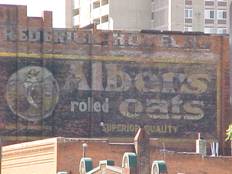
 UHM !! Albers or Rex? Which one gains your consumer attention?
UHM !! Albers or Rex? Which one gains your consumer attention?  Maybe so much building and road destruction and/or construction , plus sitting so long for a flagman to signal me on, has got me noticing other changes in downtown
Maybe so much building and road destruction and/or construction , plus sitting so long for a flagman to signal me on, has got me noticing other changes in downtown 